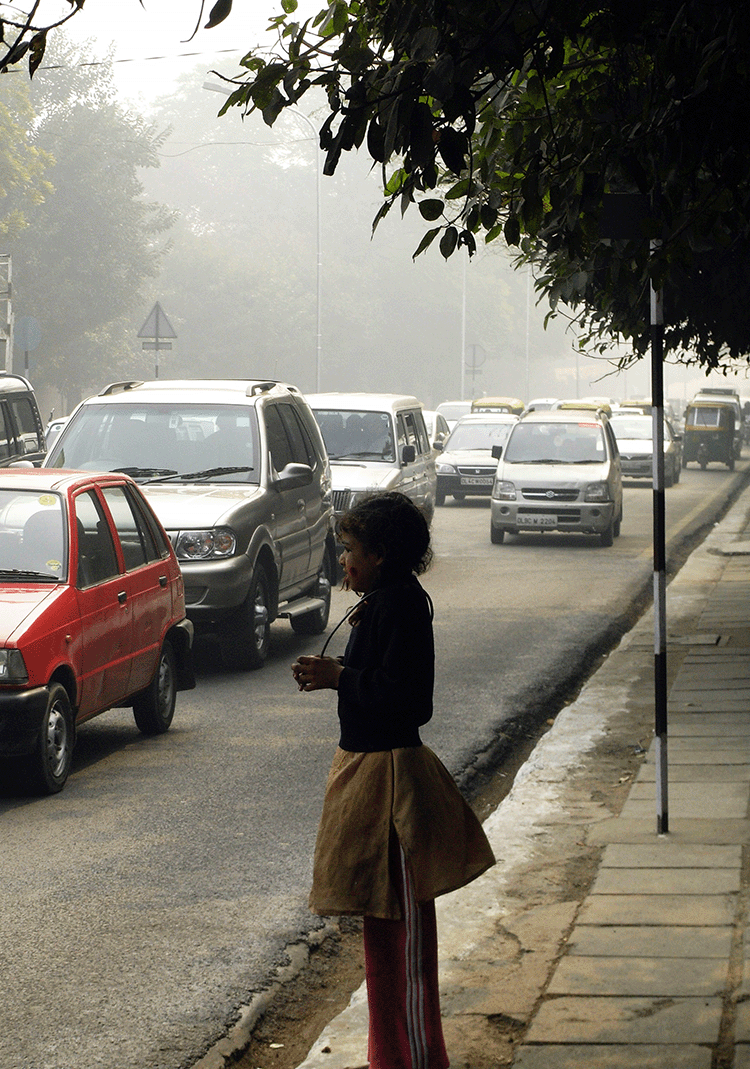
I had no money to give the wee lassie. If I had, I’d have given her every last penny in my wallet.
She couldn’t have been more than 10 years old, and she walked beside me barefoot, holding out her hand, begging me to put some coins in it.
Suddenly she did a back flip, then a cartwheel, then a little dance and held out her hand again.
I pulled out the lining of my pockets to show her I had no cash.
She pointed to her mouth indicating she was hungry.
I said “sorry,” and I was.
I fought back tears as I walked the short distance to the New Delhi Golf Club main entrance.
The year was 2008 and I was in India for the European Tour’s inaugural event in the world’s second largest country, where this week’s Hero Indian Open was due to take place until the coronavirus crashed our world.
The child worked the intersection of two busy roads on the other side of the boundary wall of New Delhi Golf Club. By work I mean she begged on the busy intersection.
She was the eldest of three young girls, all barefoot, pleading with motorists for money. Her sisters were aged about eight and six respectively. A younger brother of around four played barefoot on the dirty sidewalk, too young yet to beg. There was no sign of their parents.
The girls waited until the traffic lights turned red. Then they performed flips, cartwheels, somersaults and danced before entering the three lanes of chaotic traffic. They tapped on car windows, hoping for a few rupees from sympathetic motorists.
The contrast between the lives of these children and the golfers performing on the other side of the wall could not have been starker.
The purse for inaugural EMAAR-MGF Indian Masters was $2.5 million. S.S.P. Chawrasia earned €280,561 for winning the tournament. Sung Lee came last and took home $4,500, a fortune to the street urchins dancing beyond the boundary wall.
Inside the players’ lounge 13 silver serving dishes gleamed on the buffet table, containing enough food to keep the street children fed for weeks.
The players, officials and press stayed in the luxurious surroundings of five star hotels such as the Crowne Plaza, where room rates started at $400 per night.
Literally within yards of this five star ghetto was ample proof of life’s inequalities. Poverty and squalor was everywhere. On a busy intersection, a woman carried her small baby in her arms as she begged motorists for money. A family slept on the pavement under a makeshift blue tarpaulin erected against the hotel’s boundary wall. Entire families lived unsheltered on the streets. I saw one family throwing bits of old tire on a makeshift fire on a pavement and gathering their children around them to keep warm despite the noxious fumes. I saw mothers putting children to bed at night under dirty blankets laid out on the sidewalk.
I wish these were isolated cases. They were not. According to a report I read in New Delhi’s Hindustan Times, there were an estimated 75,000 beggars in the city in 2008 with numbers increasing all the time.
There were only 11 rehabilitation homes to house just 2,180 of this army of life’s unfortunates.
“This is a social problem all over the country and not limited to Delhi,” Social Welfare Minister Yoganand Shastri told the Hindustan times.
Begging was illegal. Those caught were arrested. However, with nowhere to go and no way to make money, most returned to the streets the day after being released.
European Tour pros, officials and journalists are a hardy bunch. However, you had to be there in 2008 to see the reaction on the players’ faces to the poverty they witnessed on that first trip to India. Many players did not venture beyond the hotel or the golf course except to get on the shuttle busses that took them back and forth from their hotel to New Delhi Golf Club. The bus ride alone was enough to tell them, and me, they were fortunate to have cushy lifestyles.
I told one player of a good restaurant literally 75 yards from the hotel entrance.
“That’s 75 yards too far,” he said.
He never ventured out on to New Delhi’s streets the whole time he was there. I did, and the memory has stayed with me.
India has become a permanent stop on the European Tour schedule since 2008. I haven’t been back, but I still think about that wee lassie and her siblings. Are they still begging on New Delhi’s streets?
I hope not.
